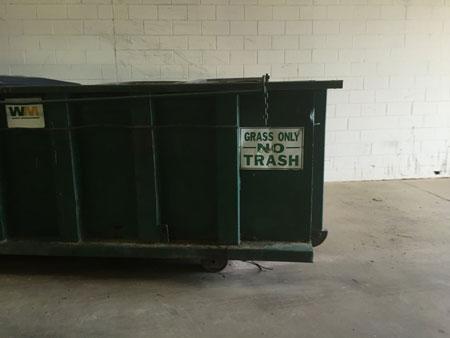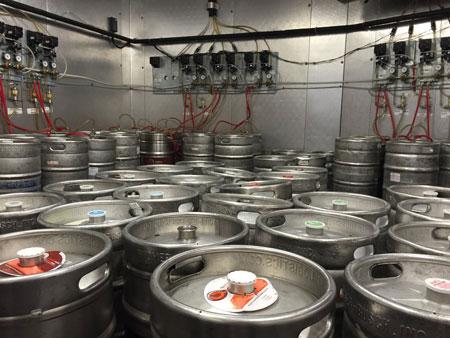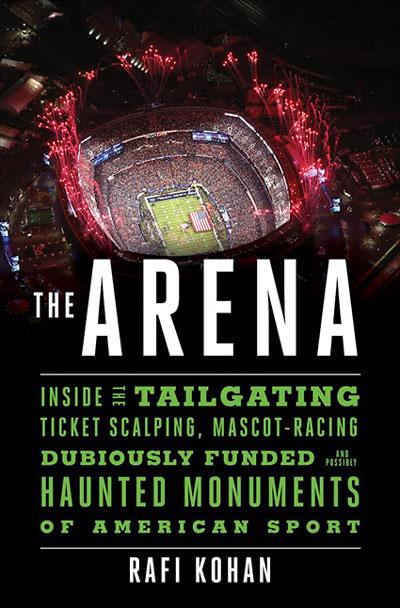On football Saturdays in State College, Pennsylvania, as many as 35,000 cars and RVs descend on the small rural town, snaking their way toward Beaver Stadium, home of the Nittany Lions.
It's an amazing, if slightly intimidating, sight to behold, according to Mark Bodenschatz, associate athletic director for facilities and operations at Penn State. At ground level, the incoming traffic and makeshift parking lots of intramural fields and animal pasturelands can seem like abject chaos. But Bodenschatz has observed this particular vehicular dance from the sky, when he was invited up in a state police helicopter. And seen from above, a pattern emerges, like the sophisticated shape of a seashell. "We park more cars on a game day than Disney," he says proudly.
Even more impressive is how quickly the stadium staff is able to mobilize a cleaning-crew army to pick up after the tailgaters, soon after the final whistle blows. "I always attribute it to something like after a war battle. In the Civil War, they always talked about -- got to add up the butcher's bill," says Bodenschatz. "Every one of those [fields] has to be raked and vacuumed. It's just a mess. But most folks don't really get it."
He's right, of course.
For many Americans, sports stadiums -- at both the collegiate and professional levels -- have come to represent homes away from home. But for all our emotional (and financial) investment in these buildings -- and for as much time we as a culture spend dissecting the contests therein via TV roundtables, talk radio, blogs, podcasts, Reddit threads, newspaper columns, barroom debates, and more -- what do we really know about our country's sporting cathedrals?
On game days, these steel-and-concrete structures come alive. They transform into small cities, with coordination from police and fire departments; with traffic plans and choreographed crowd-control; with jail cells and hospital beds, for when things turn ugly; and with an unseen legion of operational staffers, denizens of a stadium underworld, whose efforts -- as busy and intricate as those of an ant colony -- make the place run. These faceless functionaries take our tickets, sweep up our peanut shells, break up our fights, cook our hot dogs, and do just about everything else we simply take for granted.
But here's the funny thing: once you look away from the field of play, you realize the real drama unfolds behind the scenes.
Consider the groundskeepers, who tend to the turf. They prep the field for hours before the players ever arrive for work. They fertilize, mow, rake, water, sweep, tamp, aerate, and generally monitor the conditions, while steeling themselves against all manner of weather-related emergencies. As fans, all we see is a picturesque patch of grass. But it's not easy to maintain perfect playing fields, especially as stadiums increasingly host all manner of events during the season. At Fenway Park, for example, Dave Mellor, the director of grounds for the Boston Red Sox, remembers when the Rolling Stones came to town for an extended set of shows. A few days in, a roadie approached Mellor, and said, "Hey, duuuude, you smell rotten pumpkins?" Mellor did smell something. It was his outfield grass, covered for the concerts.

"Ah!" the roadie said to Mellor. "You are so f***ed!" But the groundskeeper wasn't worried. He had arranged for two truckloads of new turf -- grown by a specialty sod farm -- to be waiting outside the ballpark as soon as the stage came down, and they replaced 40,000 square feet of grass in under 30 hours, before the team's next home game.
Meanwhile, in the concourses, it's all about the "stupid little things ... the little details," per Mike Landeen, senior vice president of venue services and operations at Citi Field, home of the New York Mets. Landeen is the godfather of the team's concessions program, which may be the most ballyhooed in all of sports and features specialty offerings from a variety of New York City chefs and restaurateurs like Danny Meyer, Dave Pasternack, Drew Nieporent, Josh Capon and David Chang. But the aspect of the food program of which he's most proud is not a Shake Shack burger; it's the condiment carts, replete with fresh jalapenos, tomatoes, sauerkraut, pickles and onions (both raw and sautéed).
Landeen compares the well-appointed stations to their predecessors at Shea Stadium: "There it was mustard, ketchup, and maybe relish -- if you're lucky -- and usually it would explode when you pressed it." At Citi Field, there are no explosions, and the condiment carts are always spotless, each one monitored by an eagle-eyed attendant, ensuring pristine conditions. "All they do is clean the carts, that's all they do," he says of these employees. "The carts are always clean."
What else can we learn about the secret lives of stadium staffers? Plenty, if you know whom to ask.
Talk to the clubhouse workers for the Atlanta Braves, and they'll tell you how tired they became of replacing the champagne-soaked ceiling tiles in the low-clearance visitors' clubhouse at Turner Field, the team's former home. For a time, it seemed like every playoff-bound opponent waited to clinch a postseason berth until they arrived in Atlanta: "Go there the next morning, it's amazing -- all the fruit flies. It's nasty."

Or talk to those inside stadium control rooms, where broadcast engineers run the JumboTron and replay operators endlessly splice all available footage for possible slow-mos. Amid a constant buzz of activity, producers deploy pump-up jams and other inciting devices to get fans on their feet. They scan the crowd with kiss cams, maximizing engagement, cultivating a home-field advantage, always wary of drunken middle fingers. "You're just always on edge," says Brad Young, manager of production at Arrowhead Stadium, home of the Kansas City Chiefs.
At AT&T Stadium in Arlington, Texas, Dwin Towell is in charge of what gets played on the massive video board at Jerry Jones' stadium -- and not just for Cowboys games. "We've done everything from weddings to bar mitzvahs," he says, adding that the grossest image ever transmitted onto the big board (the interior of someone's mouth) came during a dental convention. But there are certain lines that even the push-the-envelope Cowboys won't cross, says Towell: "We haven't done a bris yet, but if we do, I am not putting it on the big screen."
Elsewhere in Jerry's World, a single employee plods around the three-million-square-foot facility changing light bulbs -- literally his only chore. Such hyper-targeted tasks are not uncommon at sports stadiums. At Citi Field, there is a five-person crew, whose only job is to monitor the ballpark's walk-in beer fridges, swapping out old kegs for fresh ones. At the now-defunct Astrodome, an elderly man was asked to feed a herd of feral cats, to combat an infestation of giant rats.
The list of workers to whom we should be grateful goes on and on. Conversion crews burn the midnight oil to flip buildings from hockey rinks to basketball courts. Legendary groundskeeper George Toma once flew a helicopter into the Cotton Bowl to clear out debris, during an unusually tight turnaround, when the Cowboys still played there. (At the Superdome in New Orleans, they often used fan boats to dry off the turf, going from Tulane to Saints games.) And mascots sweat inside of stinky costumes, occasionally suffering serious injury, all in service of fan engagement, while halftime performers, like arena superstar The Amazing Sladek, literally put their lives on the line.

But perhaps we should save our greatest appreciation for those who do the dirtiest jobs. Which surprisingly brings us back to AT&T Stadium. While fans walking into this aesthetics-first facility see its surface-level splendor, Scott Woodrow, the stadium's director of engineering, knows all about its warts, like the plumbing and venting issues that plagued the building during early events, creating unwanted smells. There were a lot of clogs in the luxury suites, in particular. "We had people flushing weird things down toilets. There was clothing, various pieces of clothing. A lot of underwear," he says.
Why underwear? Woodrow shrugs, at a loss: "I don't know if people don't make it in time, get soiled, and just want to get rid of it, or what." For Woodrow, the case of the flushed undies remains a Texas-size mystery. For the rest of us, we don't have to worry about such things during a ballgame. (After all, it's someone else's job to fish out those thongs and boxer briefs.) But next time you go to a game, be sure to tip your cap to all those hard-working stadium staffers -- and try to keep your underwear on. It's the least we can do.
-- Rafi Kohan is author of The Arena: Inside the Tailgating, Ticket-Scalping, Mascot-Racing, Dubiously Funded, and Possibly Haunted Monuments of American Sport. Published by W.W. Norton & Company. Available for purchase from Amazon, Barnes & Noble and iTunes. Follow him on Twitter @rafi_kohan.






